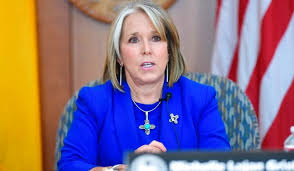A powerful magnitude 6.0 earthquake struck eastern Afghanistan late Sunday night, killing over 800 people and injuring at least 2,800 more, according to official sources.
The quake caused widespread destruction, particularly in the Kunar and Nangarhar provinces, where entire villages were reportedly flattened.
The earthquake hit at 19:17 GMT (11:47 PM local time) near the city of Jalalabad.
It was shallow, which made its impact more severe on the surface. Most of the affected areas are remote, mountainous, and difficult to access, making rescue efforts extremely challenging.
Rescue teams are scrambling to reach survivors trapped under the rubble, but efforts have been slowed by poor infrastructure, landslides, and loss of mobile network connections.
Joy Singhal, of the International Federation of Red Cross and Red Crescent Societies, warned that the “time window for survival is rapidly closing,” and emphasized the urgent need for international assistance.
The Taliban-led government has issued an urgent call for international aid, as the country continues to struggle with economic collapse and ongoing humanitarian crises.
“Support from the global community is essential,” said Abdul Rahman Habib, spokesperson for Afghanistan’s Ministry of Economy. Funding cuts from Western nations and organizations have left Afghanistan with limited resources to respond to disasters like this.
The United Nations has mobilized aid teams on the ground. Volker Türk, the UN’s human rights commissioner, expressed deep sorrow and pledged continued support. UNICEF reported that thousands of children are at risk, and their teams are already distributing medical kits, clothing, hygiene supplies, and shelter.
UN Secretary-General Antonio Guterres stated that all UN agencies present in Afghanistan are “sparing no effort” in assisting the affected populations.
Neighboring Pakistan also extended condolences and offered help. Interior Minister Mohsin Naqvi called his Afghan counterpart, Sirajuddin Haqqani, to offer medical support and humanitarian assistance.
Haqqani thanked Pakistan and also expressed sympathy for flood victims in Pakistan’s Punjab and Khyber Pakhtunkhwa provinces.
Even before the earthquake, Afghanistan was in a dire situation. The World Food Programme (WFP) noted that recent donor funding cuts had already forced them to reduce food aid, leaving millions of Afghans hungry.
Now, the earthquake has added to the suffering. Aid agencies like the International Rescue Committee (IRC) warned that the country’s disaster response capacity has been severely weakened by ongoing U.S. and international aid cuts.
Afghanistan lies in a seismically active zone, especially around the Hindu Kush mountains, where the Eurasian and Indian tectonic plates meet. The country has a tragic history of deadly quakes:
October 2023: A 6.3-magnitude quake in Herat killed over 1,500 people and destroyed more than 63,000 homes.
June 2022: A 5.9-magnitude quake in Paktika killed more than 1,000 people.
Weak infrastructure, poor building standards, and years of conflict make earthquakes particularly deadly in Afghanistan. Around 85% of the population lives on less than $1 a day, and many homes are built from mud and lack structural support.
Humanitarian agencies are urging donors not to delay in sending life-saving supplies, medical teams, and rescue equipment. With thousands still missing or trapped, and aftershocks likely, the full scale of the disaster is still unfolding.
The Afghan people are once again facing an emergency without the resources to face it alone.
The UN and international NGOs are accepting donations for Afghanistan’s earthquake response. Visit the official websites of UNICEF, IFRC, WFP, and the International Rescue Committee (IRC) to contribute.



